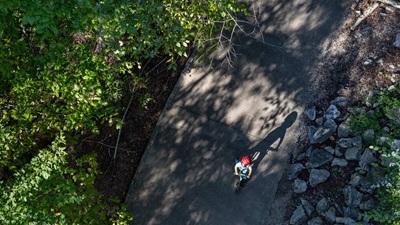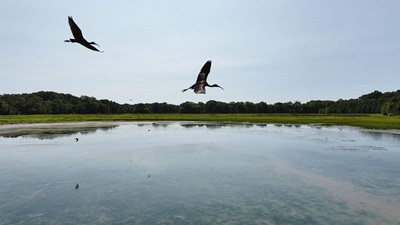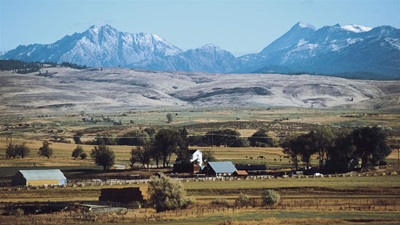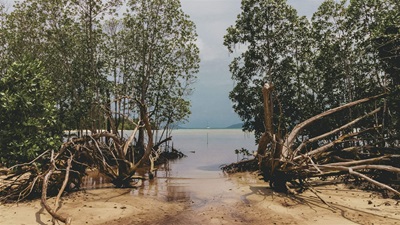State Lawmakers Look for New Solutions to Meet Growing Energy Demand
Distributed energy resources provide reliabilty for a strained grid

On a day when parts of Texas were wilting under temperatures near 100 degrees—which strained the state’s electric grid—lawmakers from across the country gathered in San Antonio for a two-day meeting to learn about options for meeting growing energy demand reliably and affordably. Electric grids are under increasing strain nationwide, driven by extreme weather events and the rising energy needs of data centers.
The meeting, sponsored by The Pew Charitable Trusts in partnership with the National Conference of State Legislatures, focused on distributed energy resources (DERs), which are energy technologies that allow consumers, businesses, and communities to generate and store their own energy. This means that users can draw less energy from their local utilities and even sell excess energy that they generate back to their power providers.
Montana State Representative Gary Parry (R), chair of the state’s House Energy Committee, attended in hopes of helping Montana lead the way on energy policy. “I’m passionate about energy, all aspects,” said Parry, a geologist who worked in the coal industry for 40 years. “You can’t [meet demand] without an all-of-the-above approach.”
Parry was among a bipartisan group of lawmakers from 12 states who toured the Southwest Research Institute (SWRI), where scientists and engineers test energy production, storage, and distribution technology. The tour, attended by numerous lawmakers from both major political parties, included emerging technologies that generate energy closer to where it is used, versus many miles away in large power plants.
Lawmakers saw a battery energy storage system, run by the local utility CPS Energy, that stores solar power and discharges it to the grid when it’s needed most. CPS Energy, which reports that it is “the nation’s largest community-owned provider of electric and natural gas services,” says this method helps to better balance energy supply and demand.
The meeting also gave lawmakers an opportunity to discuss DERs and what policy solutions could increase their adoption. Colorado General Assembly Representative Junie Joseph (D) said her Boulder constituents want more renewable energy fast. “It was good to learn that Colorado is already doing a lot of work [with DERs] and that I can find ways to improve and contribute more,” she said.
DER experts explained the myriad ways in which these technologies can help states meet power needs—by aggregating DERs across several areas, for example—without building massive and expensive new power plants or transmission lines. DERs also include microgrids, which are small-scale electricity networks that can operate independently of the main grid and provide power to communities and emergency responders when the main grid goes down, as can happen when severe weather hits. Some attendees said they are looking at DERs to help support economic development and attract new industry to their district.
Virginia State Senator Kannan Srinivasan (D), who is also a finance professional, has more than 200 energy-hungry data centers in his Northern Virginia district in Loudoun County, close to Washington, D.C. Those data centers provide $1 billion in tax revenue. “Our schools have a $2 billion operating budget,” he said. “A lot of that money is coming from data centers.”
Utah State Senator Derrin Owens (R), who chairs two committees with authority over energy and the environment, said he believes DERs can help his state attract data centers, which in turn could boost national security by helping the U.S. advance artificial intelligence ahead of other countries. “We want to do our part for national security to win the A.I. race, and we want to incentivize data centers to our state,” he said.
Kansas Legislature Representative KC Ohaebosim (D), the ranking member on the state’s Energy Committee, expressed concern over energy costs, because many of his constituents are on fixed incomes. Ohio General Assembly Representative Roy Klopfenstein (R) said that his district in northwestern Ohio is the wind capital of the state but that, without additional generation to meet rising energy needs, “we’re jumping off a cliff. It’s not sustainable. We need solutions to fill the gap.”
Pew is working to highlight how DERs can help fill that gap across the country. Promising models abound, including examples in other countries. Australia, for example, meets 10% of its energy needs with DERs, compared with about 5% in the U.S. And DERs are becoming more affordable, more reliable, and quicker to bring online in the U.S., signaling major growth potential for these technologies.
In 2026, Pew will release a “DER playbook” of policy recommendations to help states, businesses, and consumers access this energy option. The San Antonio session was aimed at informing those recommendations and helping to move the U.S. toward a more stable and affordable energy future.
Maureen Quinlan is a senior officer for The Pew Charitable Trusts’ energy modernization project and leads its work to modernize the electric grid.














